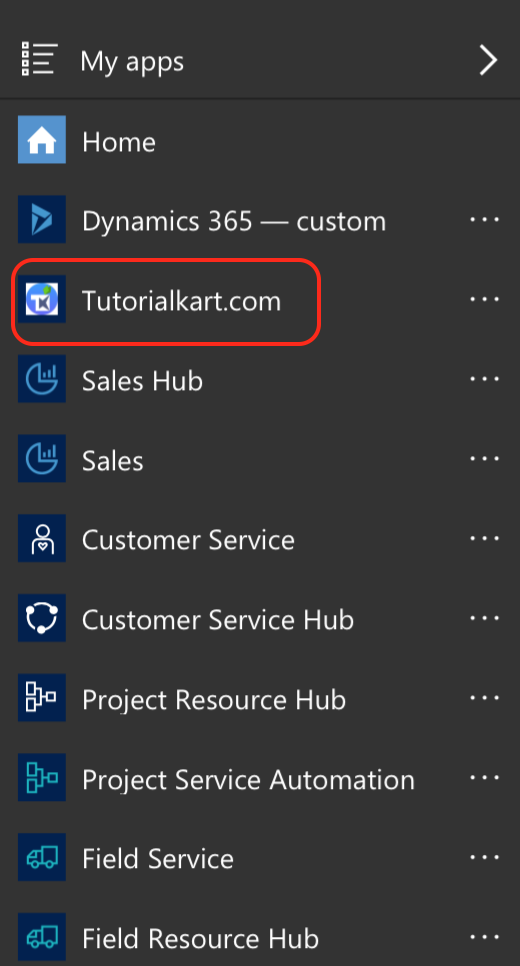How to Add Entity Assets and artificat to Dynamics 365 App
In our previous Dynamics 365 tutorial, we have learned how to create custom Dynamics 365 app using App Designer. In this tutorial, we will learn how to add Entity Assets and artificat to Dynamics 365 App.
Adding an artificat to Dynamics 365 App
On the right side of the canvas we will find different artifacts like Sitemap, Business process flow, Dashboard and Entities. We can add an artificat to Dynamics 365 App in two ways: by using the Add button on the command bar and by using the tiles in the components tab.
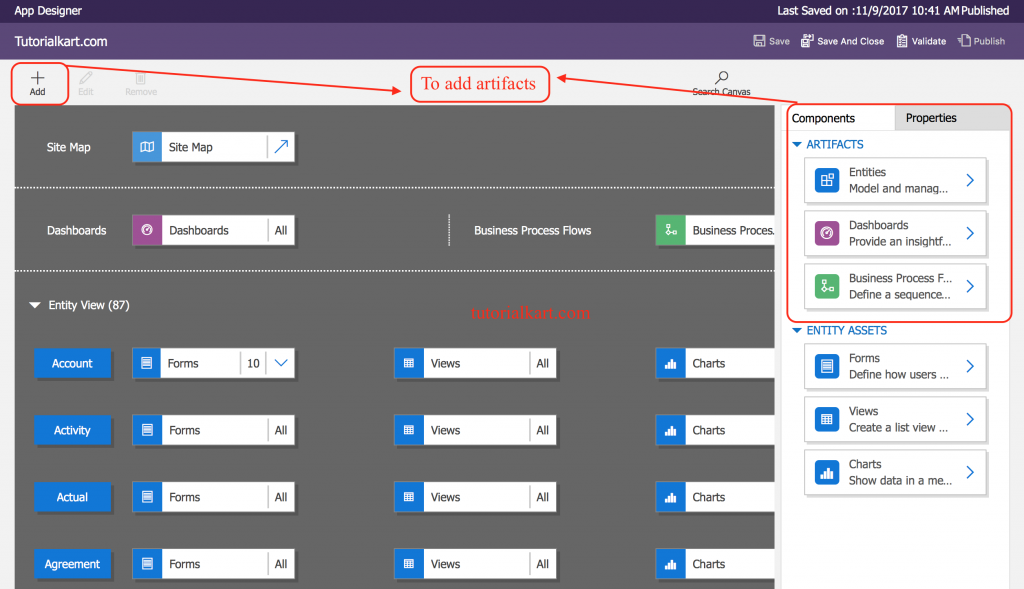
Adding Dashboard to an App
Follow the step given below to add Dashboard to an App. Navigate to Components tab under Artifacts and select Dashboards.
- When you add a dashboard or business process flow to an app, the entities they use are automatically added to the app.
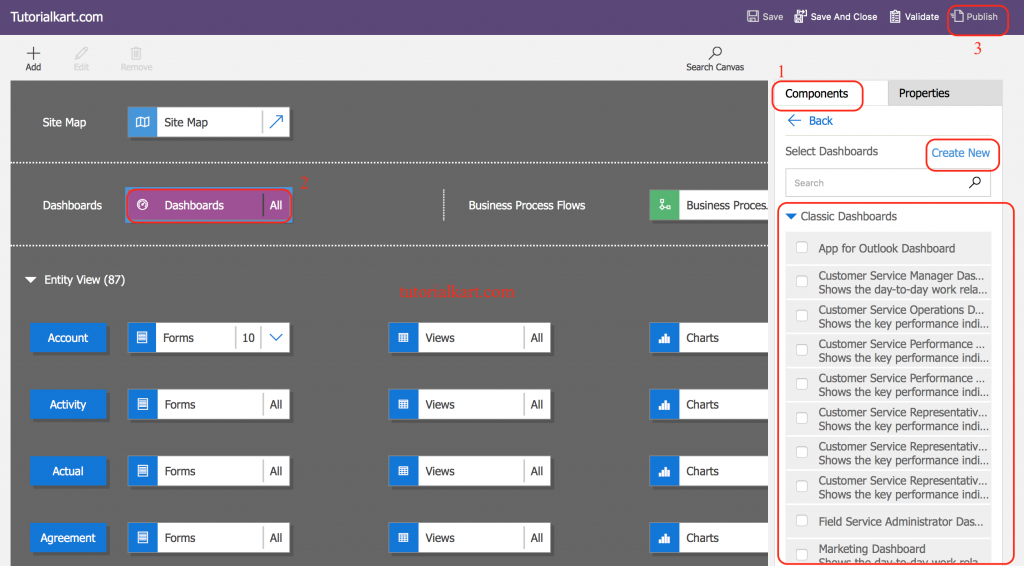
- Use the same process to add Business Process Flow and Entity.
- After adding Dashboards, BPF and Entity in App designer click on publish button.
If the dashboard you want doesn’t exist in the default solution, create a dashboard by clicking Create New on the Components tab on the right side.
Adding entity assets to custom Dynamics 365 App
Now we have to add entity assets like entity forms, views and charts to our custom Dynamics 365 App. To add entity form to an App, Navigate to App Designer canvas, Components tabs | Entity Assets | Forms.
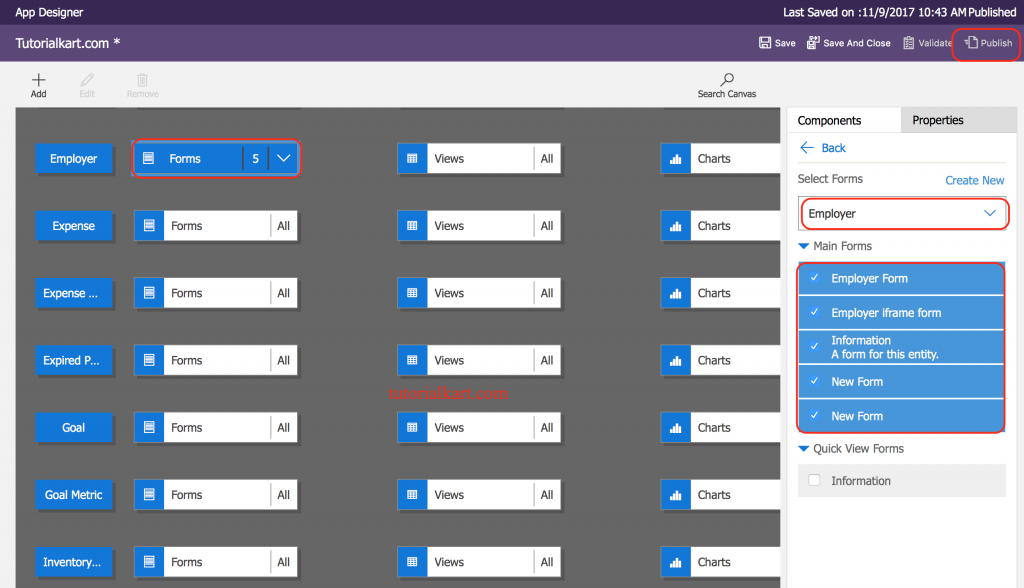
To run our custom Dynamics 365 app, each entity that you add must have at least one active form. If you’ve selected multiple forms, the first active form that appears in the default solution will be used when users run the app.
- Click on Details to expand the tile and see a list of forms that have been added.
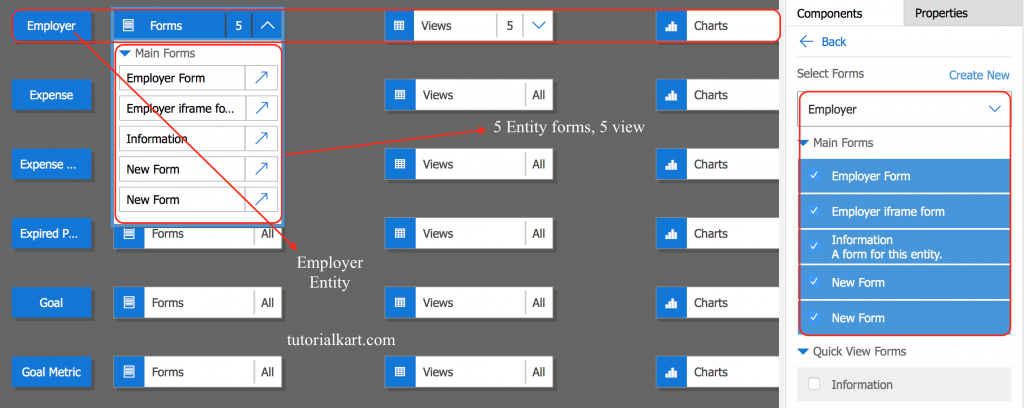
- Now click on Validate button as shown below to check dependencies.
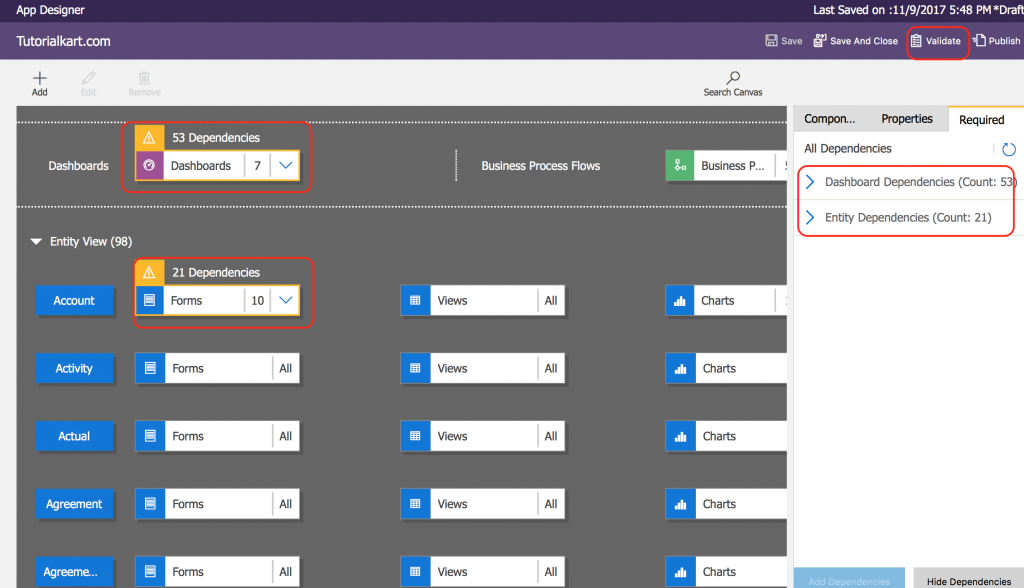
Dynamics 365 app adds a presentation layer on top of your default application to provide your end users with an enhanced simplified user experience as shown below.
